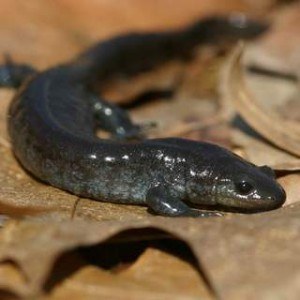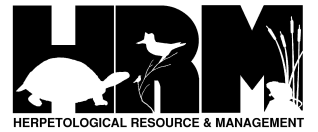Unisexual Ambystoma Complex
Overview:
Scientific Name: Ambystoma spp.
Size: variable, but usually around 4 – 8” in length.
Status: Quite common in woodlands, and seem to be tolerant of human habitat disturbance and fragmentation.Although only recently recognized as a distinct complex, this lineage has been in existence for over 5,000 years.

Habitat:
Live in deciduous and coniferous forests, from moist lowland areas to drier upland forests. Most abundant in moist woodlands with sandy soils, but can also be found in open fields and backyards in suburban areas.
Adult Coloration:
Black or grayish overall with at least a hint of bluish spots and flecks on the sides, legs, belly, and tail, and sometimes on back. Belly black or slightly lighter.May be silvery overall, or appear solid grayish black.
Juvenile Characteristics:
These hybrids are virtually all (~99%) female and show a blending of characteristics of parental species. They are often triploid, containing sets of chromosomes from one to three parental species, including the Blue-spotted, Jefferson’s (A. jeffersonianum, which itself does not occur in Michigan), Tiger, and Smallmouth Salamanders. An individual will often look closest to the parental species for which it contains the most genetic material. These hybrids will often be much larger and stouter than a Blue-spotted Salamander despite an overall resemblance.
Larvae Characteristics:
Older larvae (with four legs present) may be dark brown, olive, or gray on the back with dark mottling on tail fins. Sometimes with dull yellow blotches on the back and/or a yellow stripe down each side of the back. Belly usually solid in color and lighter than back.
Species Confused With:
Small-mouthed Salamanders have very short snouts with slightly protruding lower jaws, and markings usually grayer than blue. Dark phase of Red-backed Salamander has considerably narrower body, very small legs, and small black and white spots on the belly. May look similar to the Blue-spotted salamander but will generally be larger (Blue-spotted maxes out at about 5.5” in length) and with less distinct blue flecking. Also may have similar bulging eyes to the Tiger Salamander if genetic material from this species is present.
References:
- Amphibians and Reptiles of the Great Lakes Region by Jim Harding
- Harding, J.H. and J.A. Holman. 1992. Michigan Frogs, Toads, and Salamanders. MSU Cooperative Extension Service and MSU Museum. Extension Bull. E-2350, 144 pp.
- Ruthven, A. G., H. B. T. Gaige, et al. 1912. The herpetology of Michigan, by Alexander B. Ruthven. Crystal Thompson and Helen Thompson; Memoranda towards a bibliography of the archaeology of Michigan, by Harlan I. Smith; prepared under the direction of Alexander G. Ruthven. Lansing, Mich., Wynkoop Hallenbeck Crawford, State Printers.
- Holman, J. A. 2012. The Amphibians and Reptiles of Michigan: A Quaternary and Recent Faunal Adventure. Detroit, Mich., Wayne State University Press.
- Conant, R., and Collins, J. T. 1998. Reptiles and Amphibians: Eastern, Central North America. Houghton Mifflin Harcourt Press
